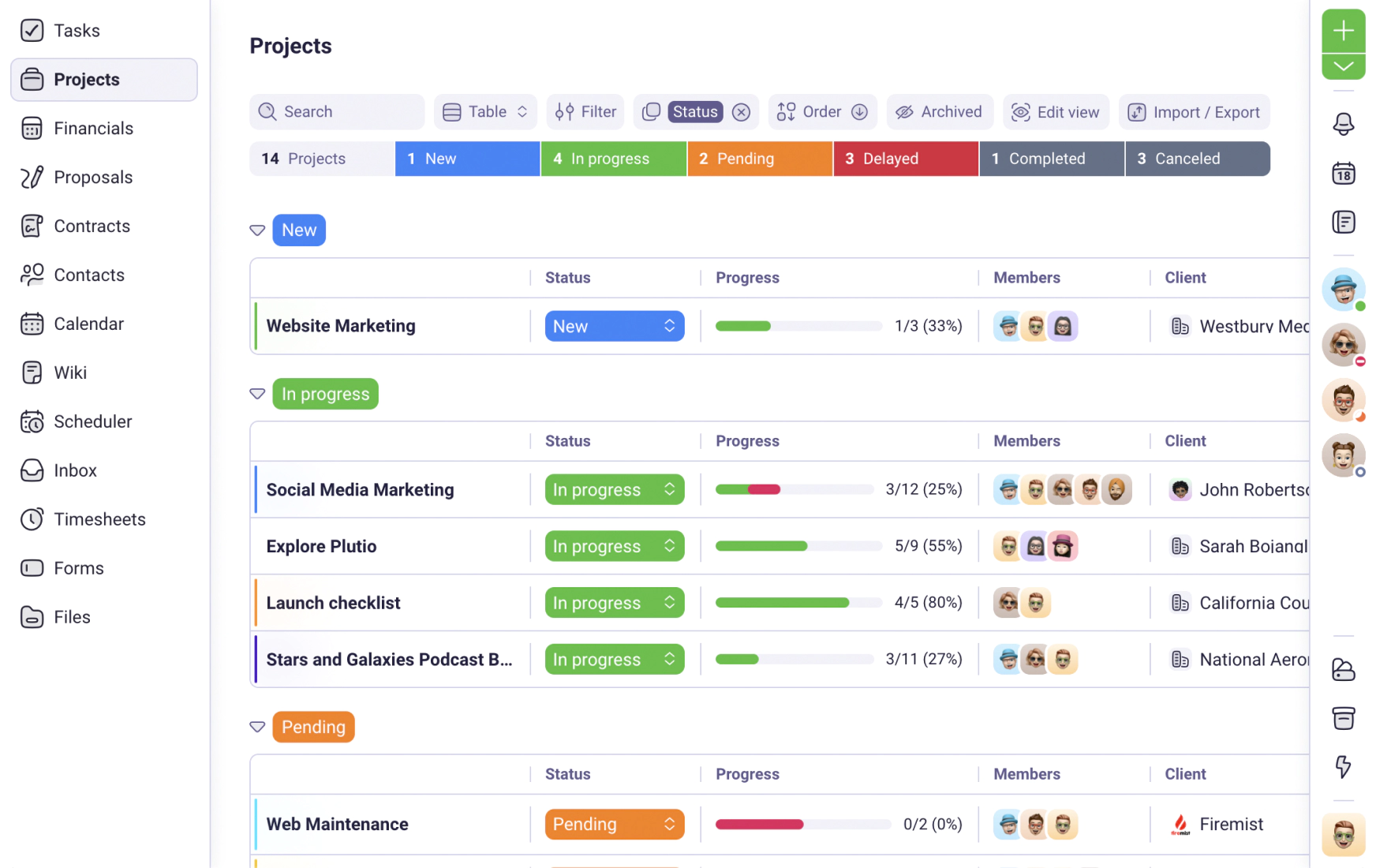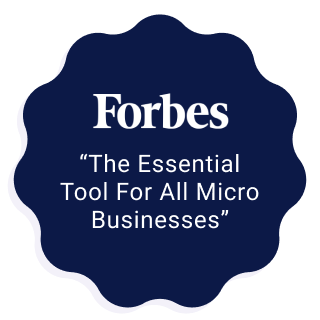We use cookies to personalise and enhance your experience.
There's only one thing that freelancers hate more than deadlines — an unsteady stream of clients. Nobody likes the uncertainty of incomes that see-saw wildly each month, and freelancers are no exception. According to the Freelancer Survey 2021, the biggest challenge faced by freelancers was finding new projects. Unless they’re industry moguls, lead generation ranks high on the list of priorities for most freelancers.
Networking and referrals are great for lead generation, and so is social media. But given the 3800% return on investment of email marketing, freelancers might be missing out on a lot by not harnessing the power of cold emails in their lead generation strategies.

Tips on Writing a Cold Email That Converts High-Paying Freelance Clients
Obviously, not all cold emails are created equal. There’s spam, which (rightly) sends shivers down the backs of self-respecting professionals, and there’s good outreach, which delivers value and gets conversions. What’s the difference, you ask? It’s all in the intention and effort.
Cold email open and response rates depend on a number of factors - relevance, personalization, and automation being some of them. Not to mention, an automated campaign with a template can reduce the active effort needed to be put in compared to other methods of freelancer lead generation.
Things to do before the cold outreach campaign
Before you rush off to build your cold outreach campaign, make sure you lay the groundwork first.
Step 1: Perfect your LinkedIn and other relevant social channels
Think of your LinkedIn profile as the landing page for new clients. Businesses like to know who they’re working with, sometimes before they even reply to your email. So it’s important to have your LinkedIn all nice and polished before you reach out to them. The same applies to your other social media channels. If you tweet regularly, update your Twitter bio to reflect your latest credentials. And if you work in an artistic field, you know better than anyone else the value of an aesthetic Instagram feed for a niche nano-influencer.
Step 2: Identify your niche
Early on in their career, it’s not uncommon for freelancers to take jobs across different fields. But with time, finding a niche becomes important. It’s nice to have range, but specialization pays better. And picking a niche doesn’t just establish expertise, it narrows down possibilities for client selection. Say you’re an interior designer. Is your forte designing open-concept workplaces or optimizing small spaces? Or maybe you’re a growth marketer. Knowing your target base is B2B SaaS start-ups will give direction and definition to your outreach.
Step 3: Build a personal website to showcase your portfolio and testimonials
A lead might not ask for samples of past projects, but that doesn’t mean you shouldn’t offer. Sample work convinces prospects of the value you bring and gives them an idea of your style. Even if you’re a beginner who hasn’t done any work, you can showcase self-funded projects or ones that you created in college. Or you can build a portfolio by offering free/nearly-free services to family and friends. Displaying user reviews or testimonials can boost your credibility, especially when you're a newbie.
Identifying relevant potential clients
The freelance economy will surge to $455 billion in 2023. And the good news is that finding relevant clients is no longer like looking for a needle in a haystack. The bad news is that it’s now like looking for multiple needles in multiple haystacks. So let us show you how.
Method 1: Online and offline business listings
Use Yelp, Google Business and business directories to find clients within your niche. Let’s say you offer cryptocurrency book-keeping services. Yelp’s filters can come in handy for zeroing in on new leads.
Method 2: Social media
A lot of companies post vacancies or requirements for freelancers on social media. And you don’t have to be aware of them or follow them to find out. Facebook has a lot of groups that you can make specific by adding the location (like we did here) or your profession to the search term.
You can join LinkedIn groups, both for industries and freelancers. Actively posting on and engaging in these groups opens doors to conversations and eventually, work opportunities.
Then there’s Twitter’s advanced search feature. It lets you narrow down your search so you don’t have to sift through pages of irrelevant tweets to find jobs.
Method 3: Job boards
Portals like Upwork, Indeed, Freelancer.com and the relatively new Contra are great ways to find (mostly) legitimate jobs for every niche under the sun.
But don’t click on that Apply button just yet. Not unless you want your application to land with dozens of near-identical ones in an HR rep’s overcrowded inbox.
Finding the key decision-makers
Instead of following the crowd blindly, carve out a shortcut for yourself. Directly find the people calling the shots for hiring in your role. Start by visiting their company website. Most organizations have ‘Meet The Team’ pages that lead you to your point of contact.
If they don’t, or if it’s a large organization with multiple potential points of contact, look them up on LinkedIn. There you can find all the employees along with their designations.
If you have a long list of leads, just input the target designation/(s) in the search bar and select the companies from the filters on the right.
The filters won’t show you every single company, so you’ll still have to individually find the remaining leads. The industry and location filters make your search hyper-specific. You can also use LinkedIn Sales Navigator to scrape lead data.
Build a list of contacts
If you’re lucky, the LinkedIn profiles of the decision-makers you found in Step 2 will have their email addresses listed in the contact info section.
But if they’re not, you can easily find them using Hunter’s Email Finder. All you have to do is enter their full name and the organization they work for.
Create a personalized cold outreach template
The word ‘template’ often brings to mind an unimaginative, impersonal email - the kind that gives cold emails their name. But your template doesn’t have to be that way. It can be personalized, relevant, and maybe even halfway interesting. Here are a few tips:
- Personalize your subject lines to include your lead’s name, their company’s name or their pain point. It’s attention-grabbing and can boost open rates by 22%.
- Seasoned hirers can sniff a templatized email from a mile away. But personal email openers are your way of letting them know that you invested time into research before contacting them.
- Nobody wants to read paragraphs of praise about a person they don’t know. So keep your introduction short, and your spotlight focused firmly on your lead.
- Try to keep your email copy short and on-point. Anything under 200 words has a better chance of being read.
- Highlight a prospect’s pain points, and then share ways in which you can help without giving away the entire solution. You can also talk about your relevant expertise and past clients.
- Always make sure to have a definitive CTA that’s easy to respond to and not pushy. Like offering a free consultation or asking them to drop a message.
- Having a sign-off that’s warm and personal can add a much-needed human touch to cold emails.
- Lastly, add a professional email signature to your email with links to all your social media should they want to check out your credentials.
Follow up with your prospects
The thing about cold outreach is that your emails don't always get read the first time you send them. So in campaigns like these, as with everything else, persistence is key. In fact, sending just one follow-up email can raise your response rates by 65.8%.
You can try to add purpose and value by leaving a personalized review, or a suggestion for their business. This template references a broken link on the company website to make the lead take notice.
Or simply ask to be redirected to the right person.
Space your follow-ups far enough apart to allow time for reading them. And be careful not to come across as too insistent or demanding.
You can also save yourself a lot of time by automating your email sequence. You can customize everything from the date and time of sending and also keep track of your open and response rates.
4 Winning Templates That Bring Conversions
Everyone has their own take on the best template to convert leads. But the truth is that different templates work in different industries and you’ll have to find what works best for you. But here are some of the crowd favorites that can serve as inspiration.
The Concise Pitch
This email has everything going for it. You can base a hundred different pitches using the format, or keep it simple like in this template.
Mentioning pain point in the subject line? Check.
Personalized intro? Check.
Brief sales pitch?
Actionable CTA?
Check and check.
The Value-Add Email
There’s nothing more valuable than trust in a business environment. When you’re working with a client for the first time, they’re bound to have their doubts about you. Offering something of value before asking them to consider your proposal is great for trust-building. Here’s how you can do that:
The Long Version
A specific, personalized subject line draws them in.
The next few lines let them know that you’ve done a thorough analysis. It’s a failsafe method — it works if the problem is something that had slipped their notice, and also if it’s one they’re aware of and struggling to solve.
And if they like your solution, there’s no way they can say no to that freebie.
The Short Version
This email says the exact same thing but in fewer words. So if you want to keep your word count low, start straight off the bat, as they do here.
Bonus points if you end with a neat CTA as effortless-sounding as this one.
The Humblebrag
If a project you’ve worked on got stellar results, capitalize on it by making it the focal point of your outreach email. Doing a show-and-tell of your achievements:
- Translates into real terms the value that you bring to their business
- Creates major FOMO by mentioning competitor success
The personalized subject line gets your prospect’s attention. And namedropping a competitor or an industry bigwig along with the results you got for them (without sounding pompous) cements the allure of your proposal.
You can try combining some of these templates or adding your own quirks to them. Once your campaign stats are in, you can use that data to tweak your template for greater success.
Wrapping up
It’s a tough job finding the balance between managing existing work commitments while looking out for new ones. But an effective cold outreach campaign can get you the best of both worlds with minimal effort and cost. Granted it’ll take a few tries and more than a little time to get it right. But don’t let a busy workload this month keep you from making sure you have work the next month. And in the months after that. Converting a lead into a client is a long-drawn process. So the sooner you start, the faster you’ll see results.
Have you tried Plutio yet?
The only app you need to run your business and get work done.
Try Plutio for FREESupercharge your business
The complete toolkit to run your business
The intuitive all-in-one solution to manage and collaborate on projects, share files, build forms, create proposals, get paid, and automate your workflow.
No credit card required


